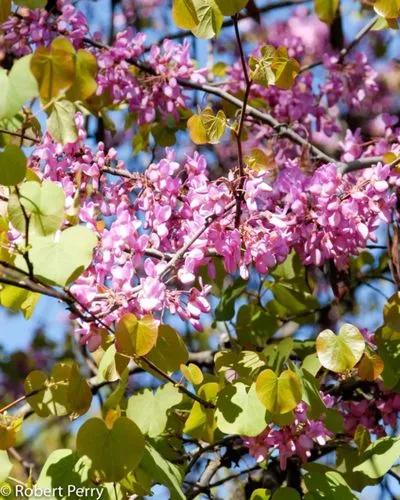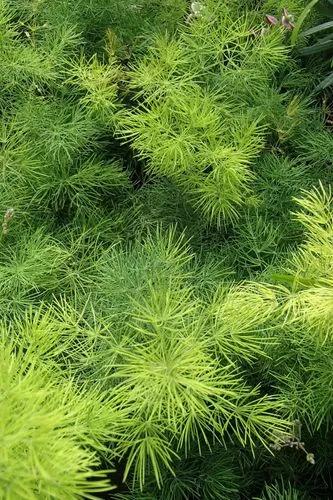This eye-catching plant will be one that will make you and the insects and hummingbirds around your garden fall in love with it. Autumn Carnation is a blooming plant with pink ruffled flowers that will ornate your garden from spring until fall. This species is less sensitive than other Azaleas, being a great addition both to your garden borders and your patio, as they also thrive in containers, not just in soil.
Autumn carnation Care
Azalea x 'Roblec'



Autumn Carnation was first encountered in 1995 by Robert Edward Lee of Louisiana, so this species is quite new in butterfly gardens, but it surely makes up for the time other plants took the spotlight. They grow up to 4 ft (1,5 m) in height and spread almost symmetrically around 4 ft in a round bush. The green foliage changes color with the cold season, turning purple at first, then deep bronze. Its growth journey makes it a compact plant, so although it grows as a bush, Autumn Carnation is low-maintenance when it comes to pruning.
How to Care for the Plant

Water

Autumn Carnation likes to be kept in moist soil during the growth period, so keep this in mind when creating a watering routine. Water them 2-3 times per week during spring, then water them every other day during the hot days of summer. They are drought tolerant to some extent, so don't stress too much if you skip watering from time to time, but it is best not to leave them thirsty for too many days, as you might disturb the growth rhythm of the roots.

Pruning

There is no need for pruning when it comes to Desert Rose plants, as they have a slow growth rate. However, you can shape the plant's trunk to the desired shape. Remember that new sprouts will appear where you prune it, so think ahead to the shape that you would like the plant to have. Shape the plant in late fall, after the blooming season ends, so you don't cut the possible flowers.

Fertilizer

Autumn Carnation does not require too much fertilization, but you will give it a good boost if you fertilize it in early spring before the first bloom with an acidic fertilizing solution. Fertilize again after the first blooming cycle stops to prepare it for the second bloom as the summer approaches. Its flowers will thank you later, throughout the whole summer and fall.

Sunlight

Blooming relies mostly on the amount of sun you provide for your Autumn Carnation. Ideally, try to offer your plant about 4-6 hours of daily sun, if possible, in the first part of the day, as the sun is more gentle to the plant's foliage and does not scorch it. You can, of course, keep your Autumn Carnation in a place with indirect light or partial shade; it will not suffer too much, just that the blooms and foliage might not be as dense as if kept in full sun.

Soil

This plant prefers to be kept in well-nourished, acidic soil with good drainage. Add peat moss and wood chips to the potting mix to make sure that the plant thrives and that the moisture is not too high but not too low either. The ideal pH for the soil is 5.5 to 6.0.

Propagation

The easiest way to propagate Autumn Carnation is by cuttings. The process takes about six weeks, and it is best done at the beginning of summer or in early spring. Find a healthy, non-flowering stem and cut it just below the node. Then, optionally, add the cutting into growth hormone, then plant it directly into moist soil, mixed with peat moss and perlite. You can support the growth of the new plant by putting it under a plastic bottle or box so you maintain humid air around it. Mist the cuttings every other day, and they will soon start to grow new leaves. In about 6 weeks, you can transplant the new Carnation plants in their own spot.

Temperature

They are not very frost tolerant, so the ideal temperature to keep Autumn Carnation at during the cold season is 50-65 ° F (10- 15 °C). Don't keep it in temperatures that drop below 23 ° F (-5 °C), as it could affect the root and next spring's bloom.

Container

You can't really go wrong about the container that you plant your Azalea in, as long as it provides enough support for the plant and has drainage holes. A terracotta container would be the best choice, as it is heavy enough to support the plant when it reaches its full size at maturity. Only repot it when the roots start to grow out of the container, as this plant prefers to be root bound in its pot.

Fun fact

Looks are not everything when it comes to Autumn Carnations. Their flowers are also edible, often used in decoration for cakes and pastries, but they can also be turned into syrup or added in the process of brewing wine, beer or liquor.

Popularity

381 people already have this plant 102 people have added this plant to their wishlists

Common pests

Aphids and thrips are the most common pests in Autumn Carnation plants; however, they also attract insects and birds that are natural enemies of these pests, so there is no need to worry too much about them. If the situation is getting out of control, use a mild insecticide so the flowers don't get affected.

Frequent diseases


Botanist’s tips

Discover more plants with the list below
Popular articles






